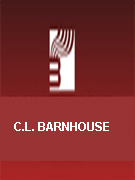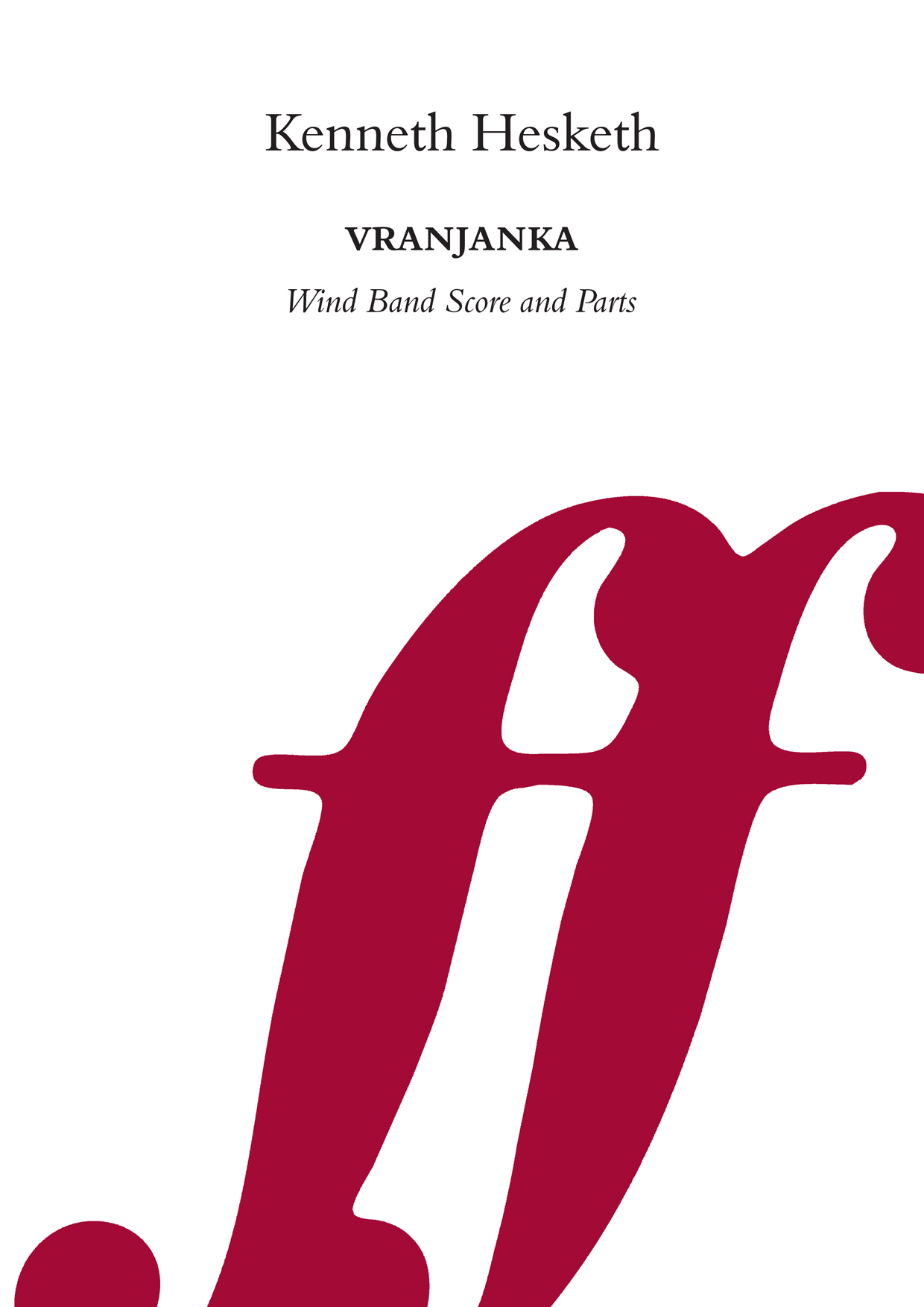Results
-
 £47.52
£47.52I'll Love My Love
Was Holst's Second Suite in F the work that made you fall in love with the sound of the concert band? Now, you can share that feeling with your developing musicians with this accessible setting of the achingly beautiful tune from its second movement. Carefully crafted, "I'll Love My Love" will expand your ensemble's technical and emotional range with its rich harmonies and engaging countermelodies. Not just a watered-down version of Holst's masterpiece, "I'll Love My Love" is an original treatment that will give you, your students, and your audience a new perspective on a familiar tune
Estimated dispatch 7-14 working days
-
 £44.55
£44.55Trumpeter's Holiday (Concert Band - Score and Parts)
Powerful dynamic effects and dramatic sweeping melodic lines characterize this bold composition. Great as a individual selection or as the second movement of Jay's Second Suite for Band.
Estimated dispatch 7-14 working days
-
£244.99
Variations on a Pentatonic Theme Wind Band Set (Score & Parts)
Rob Goorhuis wrote his Variations on a Pentatonic Theme (1987) for the Royal Wind band of Thorn, conductor Jan Cober. The work consists of five character variations on a pentatonic (five-tone) theme. The basic elements of the theme are the descending minor third and the descending major second, which in the course of the composition build up to a broad melody, unfolding itself in the final variation. The first variation resembles minimal music in its repetitive rhythmic motives. The second variation is explosive in character: rapid broken chords provide a background for soft solo motifs. The third variation is a quiet intermezzo on a slow chorale theme, creating two contrasting moods. The fourth variation is a light-hearted scherzo. The final variation is a brilliant finale with all the necessary ingredients, or, in the composer's words, "the works" Testpiece WMC 2005 Concert Division. 18:00
Estimated dispatch 7-14 working days
-
£61.00
High Voltage - Thierry Deleruyelle
High Voltage is an especially energetic composition in the big band style. The blaring brass and the ornate interplay of the woodwinds lend this work great character and conviction. In the second half of the piece two solos are played: firstly the tenor saxophone (alternatively alto saxophone), followed by a virtuoso variation in the trombone (alternatively baritone or euphonium).
Estimated dispatch 7-14 working days
-
£124.95
Sinfonietta - Score and Parts - Rob Wiffin
Program NotesSinfonietta is a challenging, extended work for symphonic wind band. It is in three movements: Dance with the Devil, A Glimpse of Paradise and Reyes Magos. The first two movements are a transition from dark to light; Dance with the Devil is aggressive and occasionally macabre whereas A Glimpse of Paradise is serene. The first and final parts of the second movement were originally written for a sequence in the Royal Military Tattoo 2000, played under the John Magee poem High Flight – ‘Oh I have slipped the surly bonds of Earth...Put out my hand, and touched the face of God’ - with videos of eagle owls in flight dramatically projected onto the buildings of Horse Guards in Whitehall, London.The last movement, Reyes Magos, is the joyous fiesta of the Three Kings. I wrote Sinfonietta while living in Spain and there January 6th, rather than Christmas Day, is the main day of present-giving, marking the Epiphany, the arrival of the Kings from the Orient at the Nativity.Sinfonietta is technically and expressively demanding but is written within the realms of tonal language.
Estimated dispatch 7-14 working days
-
£24.95
Sinfonietta - Score only - Rob Wiffin
Program NotesSinfonietta is a challenging, extended work for symphonic wind band. It is in three movements: Dance with the Devil, A Glimpse of Paradise and Reyes Magos. The first two movements are a transition from dark to light; Dance with the Devil is aggressive and occasionally macabre whereas A Glimpse of Paradise is serene. The first and final parts of the second movement were originally written for a sequence in the Royal Military Tattoo 2000, played under the John Magee poem High Flight – ‘Oh I have slipped the surly bonds of Earth...Put out my hand, and touched the face of God’ - with videos of eagle owls in flight dramatically projected onto the buildings of Horse Guards in Whitehall, London.The last movement, Reyes Magos, is the joyous fiesta of the Three Kings. I wrote Sinfonietta while living in Spain and there January 6th, rather than Christmas Day, is the main day of present-giving, marking the Epiphany, the arrival of the Kings from the Orient at the Nativity.Sinfonietta is technically and expressively demanding but is written within the realms of tonal language.
Estimated dispatch 7-14 working days
-
£54.95
When Thunder Calls - Paul Lovatt-Cooper
When Thunder Calls has been composed and designed to make it a very effective way of starting a concert or a second half of a concert and when performed with all the choreography, this piece makes for an exciting addition to any concert repertoire. Circa 3'58".
Estimated dispatch 3-5 days
-
£75.00
Der Aufstand - Gavin Higgins
Der Aufstand (German for 'riot') is not a descriptive work, nor is it solely based on the riots of 2011. It does, however, draw on the idea of opposing forces and escalating anger. The work falls into two contrasting sections that are linked by a series of repeated, 'screaming' chords. A slow build drives the first section from a single pitch to a blazing orchestral tutti. The second section is a fast and wild series of fanfares and driving rhythms that ultimately cannot be sustained. In many ways this mirrors the first. Both sections open on single tones (Bb and E) and grow to a climax of brass and hammered chords. The first performance took place on the last day of the 2012 Olympic Games. Der Aufstand is a noisy antithesis to the celebratory fanfare.Wind Band Grade: 6 (Professional and elite student and 'national' bands)Duration: 10 minutes
In stock: Estimated delivery 1-3 days
-
£125.00
Danceries (Set II) - Kenneth Hesketh
Danceries Set II was commissioned by Keith Allen and Birmingham Symphonic Winds, supported by PRS for Music Foundation and the RVW Trust. The world premire of this work was given by Birmingham Symphonic Winds, conducted by Keith Allen, at the CBSO Centre, Birmingham in 2011. This second set of Danceries continues the format established in Danceries (Set I), namely in using material taken from Playford's Dancing Master, a collection of folk and popular tunes published in the seventeenth century, to form the basis of an extended dance suite. In this set, the melodies have been more abstracted and project only a distant echo of their original forms, but as before, each movement is self-contained, colourful and direct, with its own distinct mood.The outer movements - Jennie's Bawbee and Peascod's Galliarda - share a use of driving percussion writing with a military air. Tom Tinker's Toye and Heart's Ease (movements two and three) are both settings of original melodies. All movements are more extended than in the first set, with a freer use and approach to the material; melodies now occur in various keys and are supported by a greater variety of harmonic colouring. The result is a richer, even more exhilarating set of dances. Danceries has come of age!
In stock: Estimated delivery 1-3 days
-
£75.00
Vranjanka - Kenneth Hesketh
Vranjanka (pronounced VRAHN-yahn-kah) means "From Vranje," a town in southern Serbia. It is loosely based on the traditional folksong ano Duo. The melody is extant in two versions, one in 7/8 and one in 3/4. The musical form of the piece starts with a fairly slow introductory section, a faster second section cast in a set of variations on the folksong. Vranjanka was commissioned by Timothy and Hilary Reynish in memory of their son William.
In stock: Estimated delivery 1-3 days



